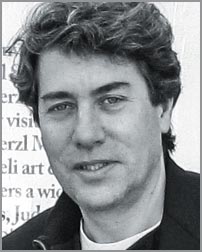News Story
Electrons See the Guiding Light
The electric field of a tightly focused milliwatt laser pointer can reach an impressive 50 000 V/m, a gradient that could, in principle, accelerate the electrons in a dental x-ray tube. With lots of cheap laser pointers and some assembly time at your kitchen table, can you build a 10 million V/m compact electron accelerator? Sadly, it wouldn’t work, and you’d needlessly annoy the neighbors.
Three main problems undermine the laser-accelerator project. First, although the light wave in a laser beam is a coherent electromagnetic field oscillation, with peaks and valleys aligned in lockstep, the train of peaks and valleys from the second laser is randomly phase shifted in time with respect to the first. So the fields from multiple lasers would interfere, as peaks from one laser cancel valleys from another.
If one has N such randomly phased laser beams, each with intensity I, the peak intensity from combining the beams would be NI. If all of them were in phase, with their wave trains aligned, however, the peak intensity would be N2I. But, alas, that dividend of coherent superposition is unavailable to the well-meaning hobbyist who just purchased a wheelbarrow full of $5 laser pointers.
Suppose you bypass the problem by simply buying a laser that, when tightly focused, gives an electric field of 107 V/m. Then the second problem can be expressed this way: “Hey genius, where’s my meter?” The heckler is pointing out that the focused laser beam is, at most, tens of microns wide—far less than 1 m. So the field is better expressed as the ratio 200 V/(20 µm), and your laser purchase would provide (at most) only 200 V of accelerating potential across the focal spot. Actually, it wouldn’t even remotely do that, courtesy of the third problem.
That problem is that laser light in free space is a high-frequency transverse electromagnetic wave, with fields orthogonal to the beam direction: An electron would do a high-frequency sideways shimmy, with negligible net acceleration and energy gain.
Mode locking
To solve the first problem (insufficient laser intensity), combining all the lasers together in phase would be a tough task. Fortunately, a method already exists that does the job in a single laser: It’s called mode locking, and it allows many beams, or modes, in the laser to oscillate simultaneously. Although a mode-locked oscillator will cost orders of magnitude more than a pile of laser pointers, the mode-locking process produces a train of short, nanojoule-energy pulses whose peak intensity is N2 as high as one of the individual modes, where N (here the number of modes) can be a very large number. The electric field in just one of the pulses, when focused, is well beyond 10 million V/m.
It turns out that even that large a field is much too weak to compete with conventional particle accelerators. With a lot more money for lasers and optics, however, and the important Nobel Prize–winning technique of chirped pulse amplification (see Physics Today, December 2018, page 18), one of those nanojoule pulses can be amplified by a factor 1010 to get a 10 J laser pulse of duration 50 fs. Focusing that pulse to, say, a 50 µm spot then gives intensities greater than 1019 W/cm2, which corresponds to a peak electric field of 5 × 1012 V/m. That’s an impressive 0.25 GeV across the focal spot. Electron acceleration modules at the GeV level are of interest for x-ray light sources and can form stages for future high-energy-physics applications.
A 280 TW laser pulse (red arrow) is injected through a hole in mirror M1 and into a 20-cm-long hydrogen-gas density depression generated a few nanoseconds earlier from gas heating by a copropagating Bessel beam. The leading portion of the drive pulse forms its own plasma waveguide as it propagates along the density depression, simultaneously exciting a wakefield in the plasma (the top right inset shows a simulation of the laser pulse and its trailing wakefield). The Bessel beam is generated by a separate synchronized laser pulse (blue arrows) that passes through a diffractive axicon DA (between mirrors M2 and M1) and focuses into the hydrogen-gas jet. The insets show the measured intensity profiles of the Bessel beam. (Background photo courtesy of Reed Hollinger, Colorado State University.)
Plasma waveguides to the rescue
But don’t get too excited (yet). The sideways shimmy would ensure that a negligible fraction of the 0.25 GeV would be imparted to an electron. But in a neat trick of plasma physics and optics, the second and third problems—how to get a long acceleration distance and how to beat the high-frequency transverse field—are both solved using an optical fiber made of plasma. As discussed in one of the authors’ earlier works—see the Quick Study by Howard Milchberg, Physics Today, June 2019, page 70—such a fiber, called a plasma waveguide, can optically guide an ultra-intense laser pulse over long distances.
A plasma waveguide can easily support peak intensities of at least 1019 W/cm2. That’s 108 times as high as the damage threshold of a conventional glass optical fiber. As the intense pulse propagates down the plasma waveguide, its pressure pushes the lighter electrons out of the way—leaving the heavier protons unperturbed—and excites a plasma charge-density wave that follows the pulse like a water wake from a boat, as shown in the figure. That charge-density wake supports an enormous electrostatic field (the so-called laser wakefield) that points along the pulse-propagation direction. (See the article by Wim Leemans and Eric Esarey, Physics Today, March 2009, page 44.)
In our recent experiments using the ALEPH (Advanced Laser for Extreme Photonics) at Colorado State University, a 25 GV/m laser wakefield was induced by a 1019 W/cm2 laser pulse injected into and optically guided by a 20-cm-long hydrogen plasma waveguide narrower than a human hair. The electrons were injected into the wakefield from laser ionization of a small amount of nitrogen added to the hydrogen gas and accelerated. The plasma is effectively a field transformer: Although electron acceleration to 0.25 GeV across the focal spot of a 1019 W/cm2 electromagnetic pulse is unattainable in free space, sending that pulse down a long plasma waveguide drives an electrostatic acceleration 20 times as high—up to 5 GeV. (It’s worth noting that electron beams from conventional high-energy linear electron accelerators can also drive plasma wakefield acceleration and produce energy-doubled beams.)
A plasma waveguide obeys the same principle as all optical fibers: The refractive index near the axis, or core, of the waveguide must be higher on axis than off axis in the fiber’s periphery—the cladding. In a plasma, where the polarizability of free electrons is negative, that means the core must have lower density than the cladding. We recently demonstrated two methods for generating such extended annular plasmas using Bessel-beam laser pulses.
In the scheme used in our acceleration experiments—pictured here—an ultrashort laser pulse with a transverse intensity profile shaped like a zeroth-order Bessel function (a J0 pulse) first ionizes hydrogen gas from a long gas jet, forming a tens-of-centimeters long and very thin (less than a 10 µm width) plasma of temperature 105 K. The high-pressure plasma explosively expands in a few nanoseconds, snowplowing a long cylindrical shell of enhanced neutral hydrogen density—a shock wave—on the outside, with the on-axis density rapidly dropping.
After a few nanoseconds, the long hydrogen gas structure formed by the low-density core and the surrounding neutral shell is injected at one end by the ultrahigh-intensity pulse. And then something initially unexpected and remarkable takes place: The leading portion of the injected pulse ionizes the core and the inside wall of the neutral shell, forming a plasma waveguide that guides the rest of the pulse—analogous to a locomotive laying railroad tracks for the rest of the train cars to follow. Not only does that self-waveguiding pulse generate its own plasma waveguide as it propagates, but it also excites the laser wakefield responsible for our measured acceleration up to 5 GeV in 20 cm.
So what advice would we give a young scientist interested in advanced accelerator physics? One word: Plasmas. They’re the accelerator medium of the future.
REFERENCES
Bo Miao is a postdoctoral associate, Jaron Shrock is a graduate student, and Howard Milchberg is a professor of physics and electrical and computer engineering at the University of Maryland in College Park. They are all members of the Intense Laser Matter Interactions group, of which Milchberg is the principal investigator.



Published August 4, 2023










